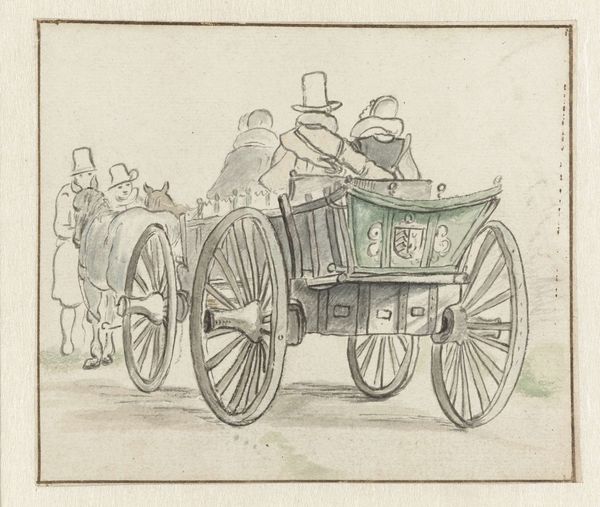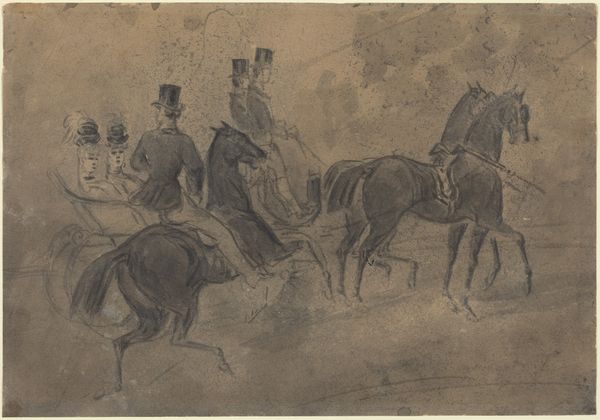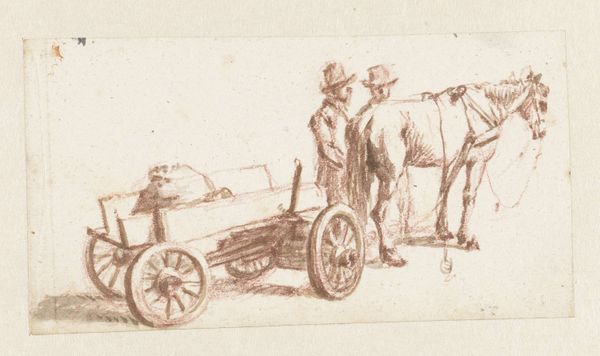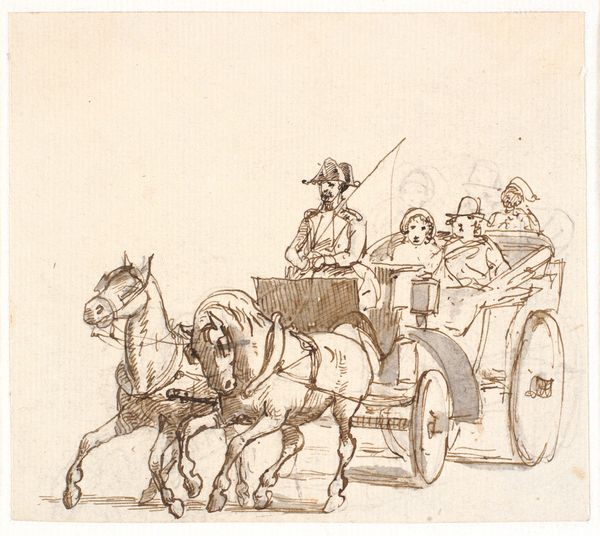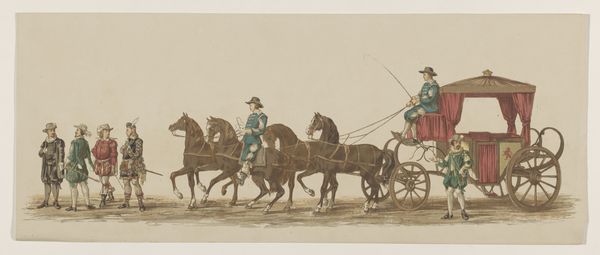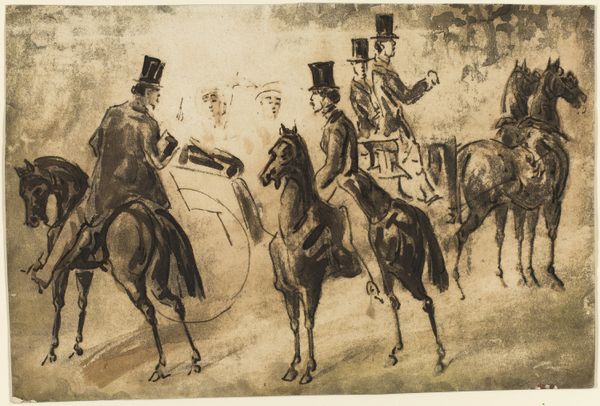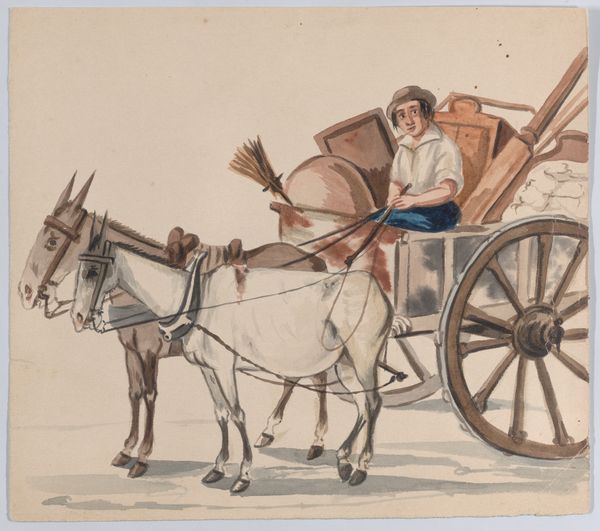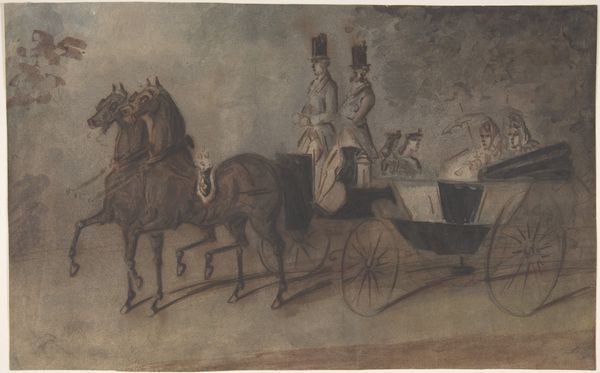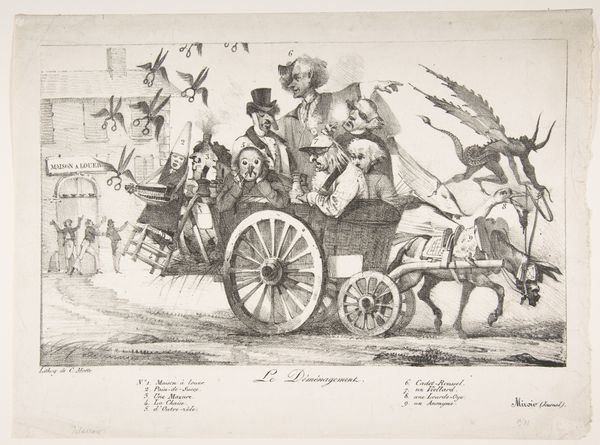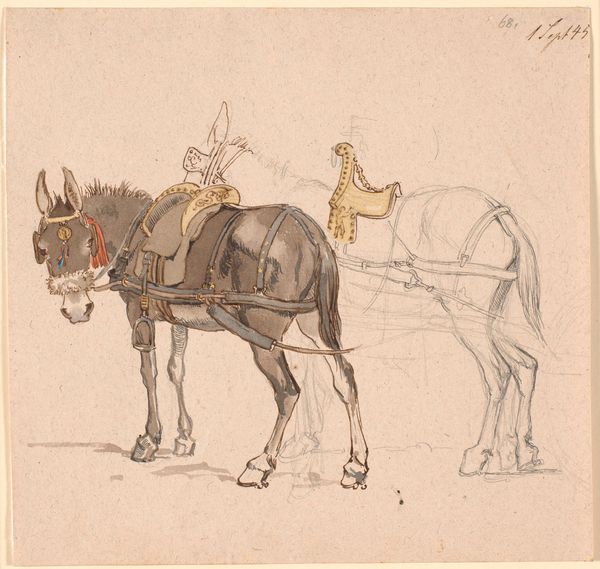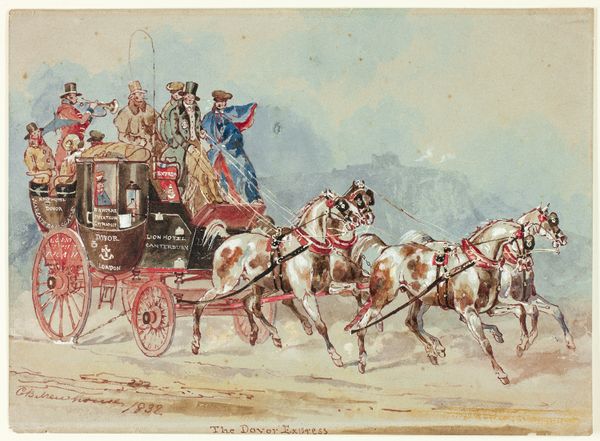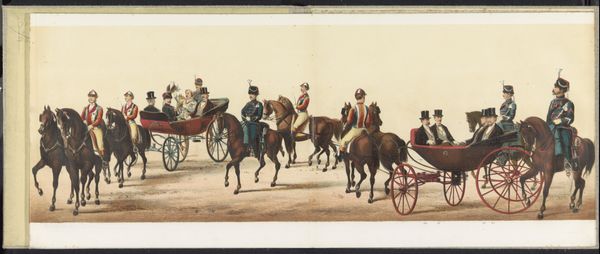
Dimensions: height 189 mm, width 251 mm
Copyright: Rijks Museum: Open Domain
Curator: This drawing, simply titled "Vigilant met twee paarden bespannen" which translates to "Vigilant Drawn by Two Horses" is by Jan Karel Jacob de Jonge, and we estimate it was created sometime between 1838 and 1880. It is a pencil sketch that features watercolour, rendered on paper. Editor: The piece immediately strikes me with its delicate balance. Despite the implied movement and power of the horses, there’s an airy, almost dreamlike quality to the scene. The colours are so muted. Curator: Absolutely. The romanticism apparent in the artist's style evokes the sociopolitical context of 19th century European aristocracy. These kinds of scenes are embedded in the complex systems of power, where class is overtly symbolized through luxury, privilege, and access to technology. Editor: I agree, it certainly communicates wealth. But beyond that, the harnessed horses, the polished carriage, speak of a cultural obsession with control and display. Horses are ancient symbols of strength and freedom, but here they’re domesticated, representing the triumph of order over nature. What would that mean in those times? Curator: Good question. Consider what this means for those not within that carriage. Gender also plays a critical role. These spaces of power are often deeply rooted in patriarchal structures. Where are the women, besides the carriage being this kind of gilded cage? Editor: Visually, the artist's choice to render the crowd as indistinct shapes is very suggestive. It almost fades into the background compared to the clarity in the depiction of the coach’s passengers. It tells the viewer where to direct their attention and admiration, solidifying the class structure with a specific value for what constitutes a citizen. Curator: I concur; in looking at the piece through that lens, we’re able to explore representation not just as an aesthetic choice, but as a deliberate construction that upholds very particular ideological positions. I think there’s real potency to exploring art in these terms. Editor: It makes us rethink commonplace themes and images from history, encouraging a new type of analysis in line with the symbols used. That gives us a lot to think about!
Comments
No comments
Be the first to comment and join the conversation on the ultimate creative platform.
